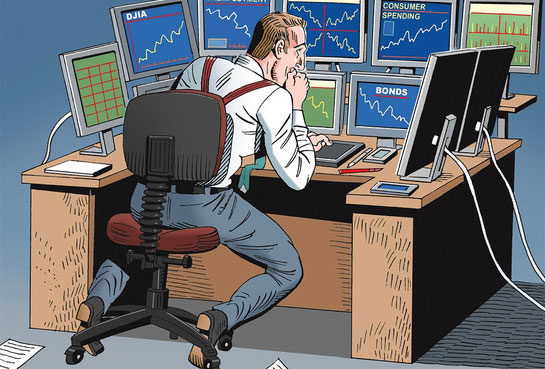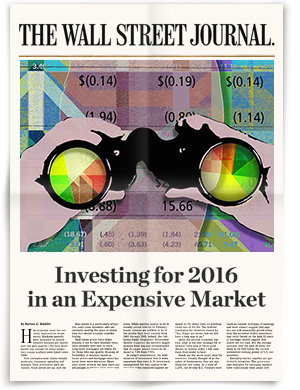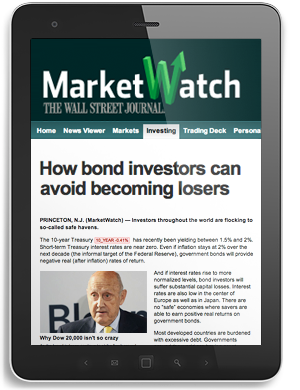What Does The Prudent Investor Do Now?

The economic news has certainly improved in recent weeks. Nonfarm payrolls have increased by almost 250,000 workers per month over the past quarter—the best three-month run (except for when temporary census workers were hired) since 2006.
New unemployment claims remain moderate. Consumer spending and business fixed investment have advanced. Stock prices are up. And the Federal Reserve announced last week that the majority of the largest United States banks continue to have adequate capital even in an extremely adverse hypothetical economic scenario.
In short, the chances of a self-sustaining recovery have improved—a “virtuous cycle” where increased employment leads to better consumer sentiment, stronger sales, and continued increases in employment.
But let’s not uncork the champagne quite yet. The strong employment gains may well have been aided by our unusually warm winter. Rising gasoline prices will put increased pressure on consumers. And a number of strong economic headwinds still exist.
The economies of the euro zone are getting worse, not better. The housing sector has yet to make a convincing turn for the better, and the economic data, as a whole, suggest the economy is growing at a rate nearer to 2% rather than its previous trend rate of 3%-4%. The realistic conclusion for investors should be “Yes, things are better, but we still have a long way to go.”
Given the present economic outlook, what is the best strategy for investors? Let’s look at three asset classes in reverse order. I will rank them from worst to best.
Bonds are the worst asset class for investors. Usually thought of as the safest of investments, they are anything but safe today. At a yield of 2.25%, the 10-year U.S. Treasury note is a sure loser.
Even if the overall inflation rate is only 2.25% over the next decade, an investor who holds a 10-year Treasury until maturity will realize a zero real (after-inflation) return. If the investor sells prior to maturity, it will likely be for less than the face value of the note if the inflation rate rises.
Even if the inflation rate remains moderate, interest rates are likely to rise to more normal levels as the economy continues to recover. Investors with long memories should recall that over the entire period from the 1940s until 1980, bonds were a horrible place to be. Given the likely trends, U.S. Treasuries and high quality bonds are likely to be extremely poor investments and are very risky.
Equities on the other hand are still attractively priced, despite their substantial rise from the October 2011 lows. A good way to estimate the likely long-run rate of return from common stocks is to add today’s dividend yield (around 2%) to the long-run growth of nominal corporate earnings (around 5%).
This calculation would suggest that long-run equity returns will be about 7%—five percentage points more than the safest bonds. This five-percentage point equity risk premium is close to the historical average.
A variety of valuation metrics (such as current multiples of earnings and book values) suggest that equities are still reasonably priced today. Only the so-called Shiller price/earnings ratio (based on the past 10 years of earnings) would suggest that stocks are too high. But the average earnings over the past 10 years are likely to be well below the current normalized earning power of U.S. corporations.
Emerging market equities are particularly attractive. The price-earnings multiples for emerging markets have traditionally been about 20% higher than for U.S. stocks. Today they are 20% lower. Over the long run, emerging markets have better demography (younger populations) and better fiscal balances than the developed markets. And they are likely to continue to grow at a far more rapid rate than the developed world.
Real estate is a particularly attractive asset class. Investors who are currently renting the place in which they live should strongly consider buying.
Real-estate prices have fallen sharply, if not to their absolute lows, then certainly very near to them. Long-term mortgages are below 4% for those who can qualify. Housing affordability (a measure based on house prices and mortgage rates) has never been more attractive. Moreover, under present tax laws there are advantages to owning since mortgage interest is deductible and rent is not.
Too many people invest with a rearview mirror. Housing has been a dreadful investment since the housing bubble burst in 2007. I believe it will be one of the best investments over the next decade.
Still, we are likely to be in a low-return environment for some time to come. While equities appear to be favorably priced relative to Treasury bonds, returns are unlikely to be at the double-digit level enjoyed from 1982 through 1999. Indeed, the California Public Employees’ Retirement System (Calpers), the nation’s largest pension fund, has just recommended that its target annual return be reduced to 7.5% from 7.75%.
In today’s environment, the minimization of investment fees is more important than ever. A 1% investment management fee may appear to be very low when measured against assets. But when measured against a 7% equity return, that fee represents more than 14% of the return. Against a 2% dividend yield, the fee absorbs one half of the dividend income.
And measured against the mediocre return of the typical actively-managed equity fund compared to lower-cost, broad-based index funds and ETFs, management fees can be very high indeed. (During 2011, over 80% of actively-managed equity funds were outperformed by the broad-based S&P 1500 Stock Index.) Despite the considerable economies of scale that characterize the investment management business, the annual management fees charged to mutual-fund investors have not declined over time. Investors can’t control returns offered by the U.S. and world financial markets. But the one thing they can control is fees paid to investment managers.
The only way to ensure that you can enjoy top quartile investment returns is to choose investment funds that have bottom quartile expense ratios. And, of course, the quintessential low-expense instruments are broad-based, indexed mutual funds and ETFs.
Mr. Malkiel is the author of “A Random Walk Down Wall Street” (10th ed., paper, W.W. Norton, 2012).






